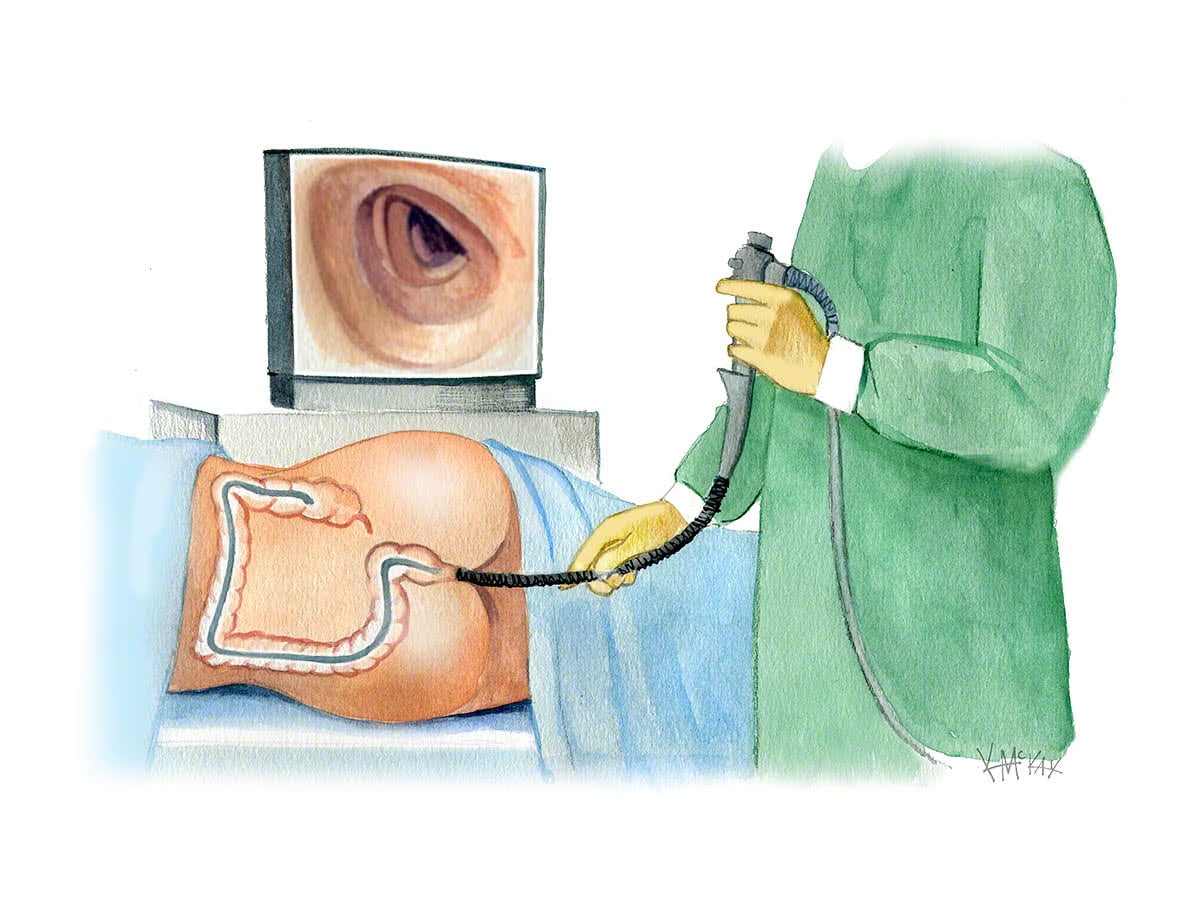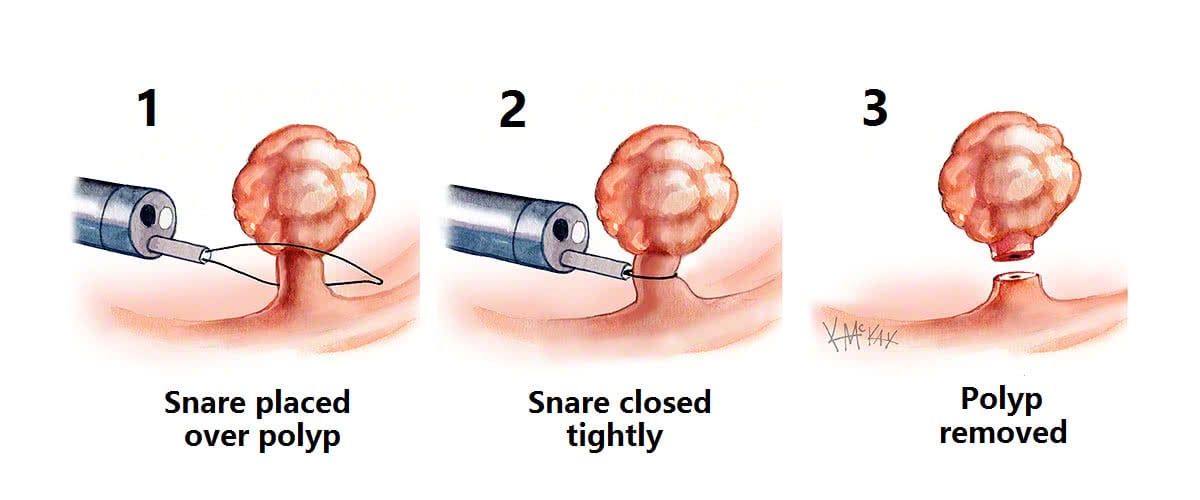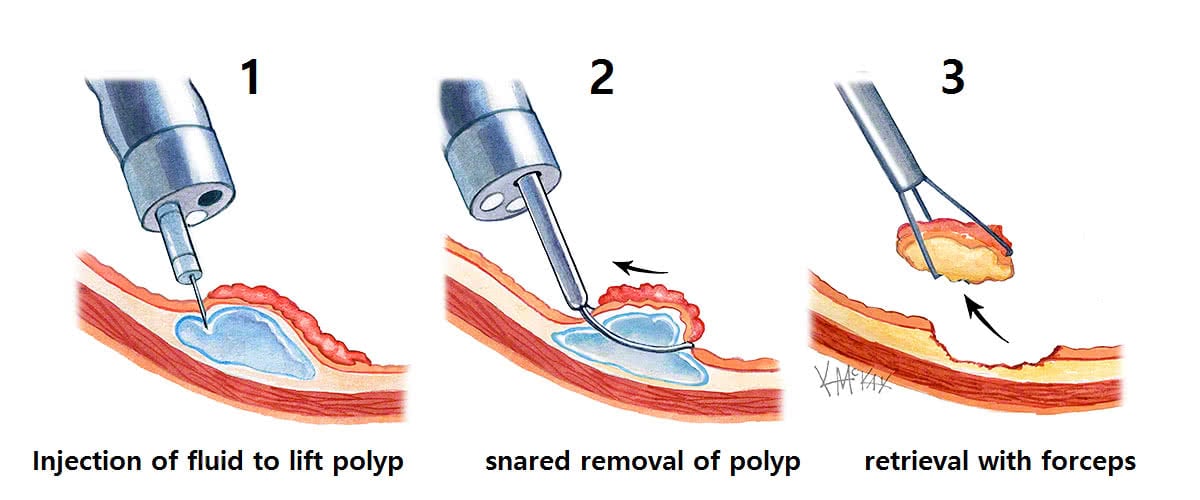A polyp is an abnormal growth or projection from the mucosal surface or lining of the bowel wall. A polyp typically has the appearance of a small, warty outgrowth.

Types of polyps
Polyps vary in shape and size, and type as well as number and location.
Most polyps are mushroom or cauliflower in shape and are pedunculated having a short stalk or pedicle that connects them to the normal mucosal lining of the bowel. Most polyps are less than a centimetre in size. Some have no stalk but are flat (flat polyp) or carpet like (sessile polyp).
There are 4 main types of polyps:
- Adenomatous
- Hyperplasic
- Inflammatory
- Hamartomatous
Why remove polyps?
Adenomatous polyps, if given enough time, can become a cancer (figure 1). This has been shown unequivocally in epidemiological studies. Therefore, patients who have adenomatous polyps are at increased risk of developing bowel cancer. Therefore, all patients with polyps should undergo periodic surveillance by colonoscopy to allow polyps to be removed when they are still small, before they become cancers.

How long does it take for a polyp to become a cancer?
It may take 5 to 10 years for a polyp to become a cancer. Large polyps have a greater risk of cancer development.
How do I know if I have a polyp?
Unfortunately, you may have polyps without knowing it and without having any symptoms. In fact, polyps rarely produce symptoms and usually are discovered incidentally at the time of colonoscopy. Very large polyps may occasionally bleed with blood noticed in the stool.
Who is at risk?
Anyone with per rectal bleeding should have a full colonoscopy to exclude colonic polyps or cancer. Additionally, any patient more than 40 years of age with a family history of cancer or altered bowel habit should consider having a colonoscopy.
Patients who have had a previous polyp or cancer removed, have an increased lifetime risk of developing cancer. Those with a known inherited genetic syndrome such as Familial Adenomatous Polyposis (FAP) or Hereditary Non-Polyposis Colorectal Cancer (HNPCC) have an increased risk of developing multiple polyps and should undergo regular surveillance colonoscopy.
Colonoscopy and polypectomy
Colonoscopy allows full visualisation of the mucosal lining of the colon and rectum (figure 2). It also allows any polyps seen to be removed at the same time. Up to 90% of polyps can be safely and completely removed by colonoscopy.

How are polyps removed?
For small polyps less than 5mm in size polypectomy is performed at the time of colonoscopy using biopsy forceps and electrocautery (figure 4).

However, for larger polyps, polypectomy is performed using a wire snare and electrocautery (figure 5). You are asleep at the time so feel nothing.

Endoscopic Mucosal Resection (EMR)
Very large polyps may require removal by Endoscopic Mucosal Resection (EMR) technique, where the polyp is first injected with a fluid to lift a flap polyp up, allowing it to be more easily and safely removed using a snare.

What happens after the polyp is removed?
All polyp tissue is sent to a pathologist who looks at it under the microscopy to see the type of polyp (e.g. adenomatous, inflammatory, hyperplastic or hamartomatous), and to see if there is any cancer within the polyp or suspicious features that lead to it becoming a cancer. If it is an adenomatous polyp, you will require ongoing surveillance colonoscopies in the future. If cancer is found within the polyp, your colorectal surgeon will discuss with you the surgical management.
